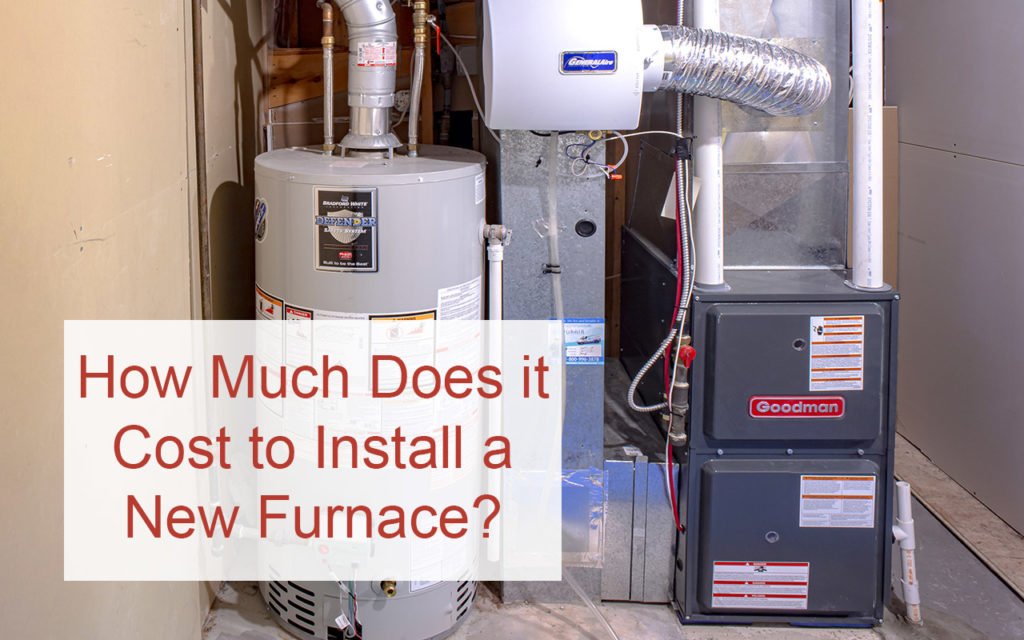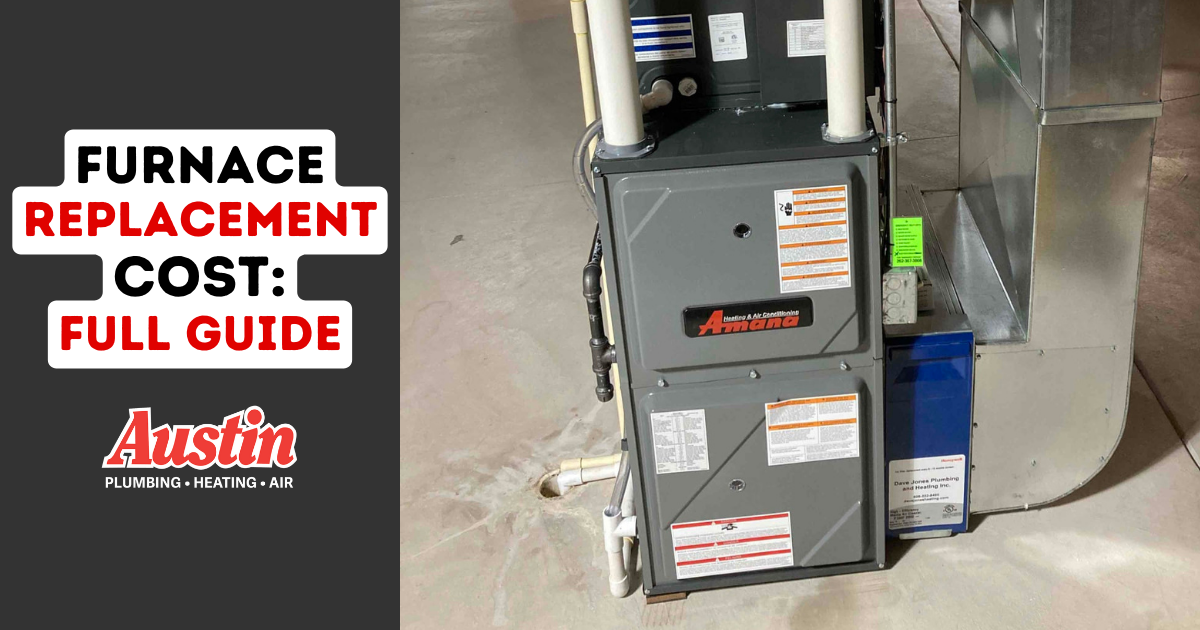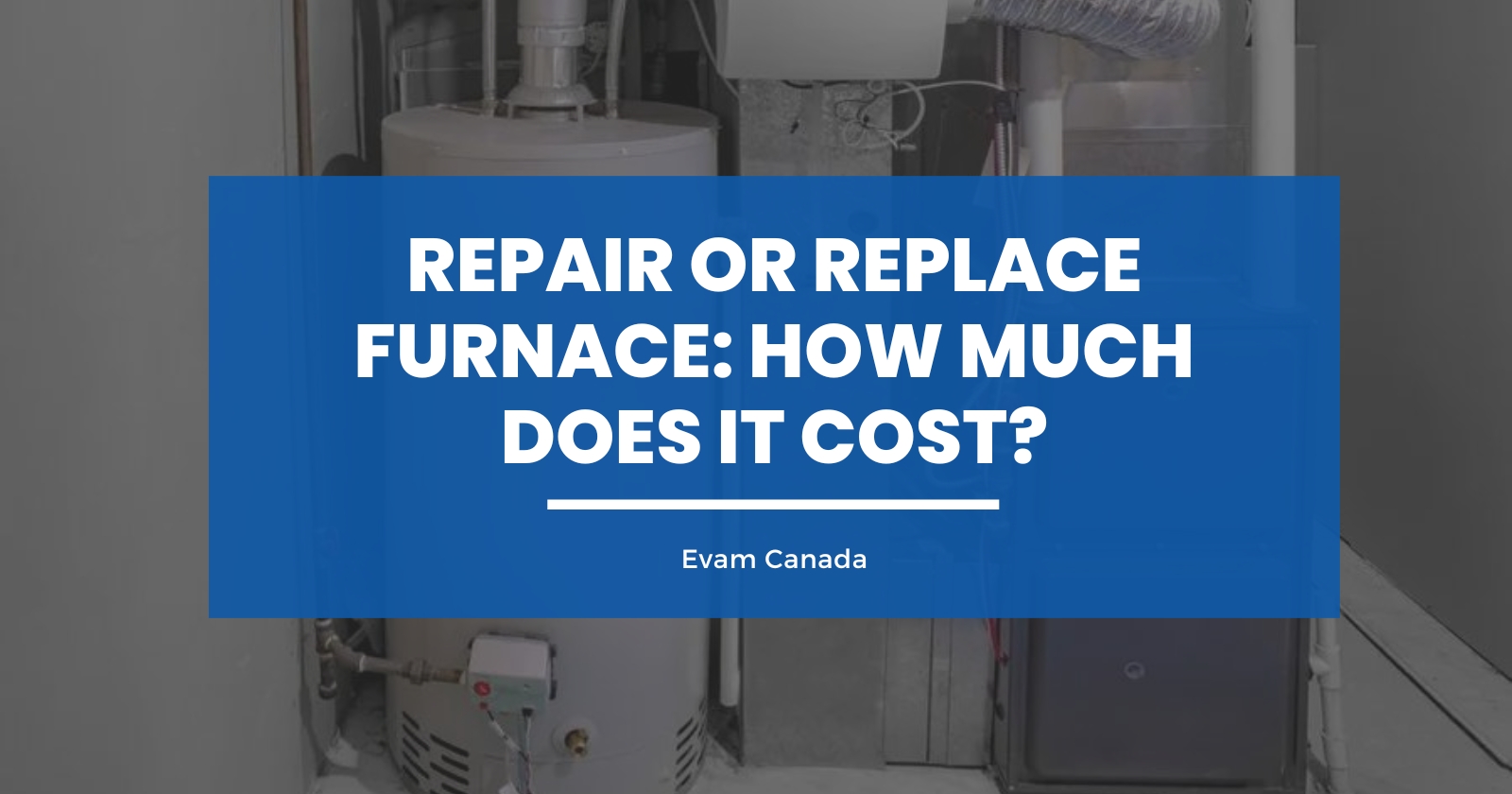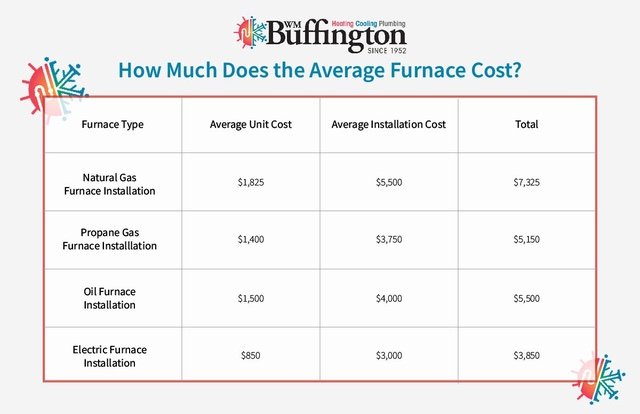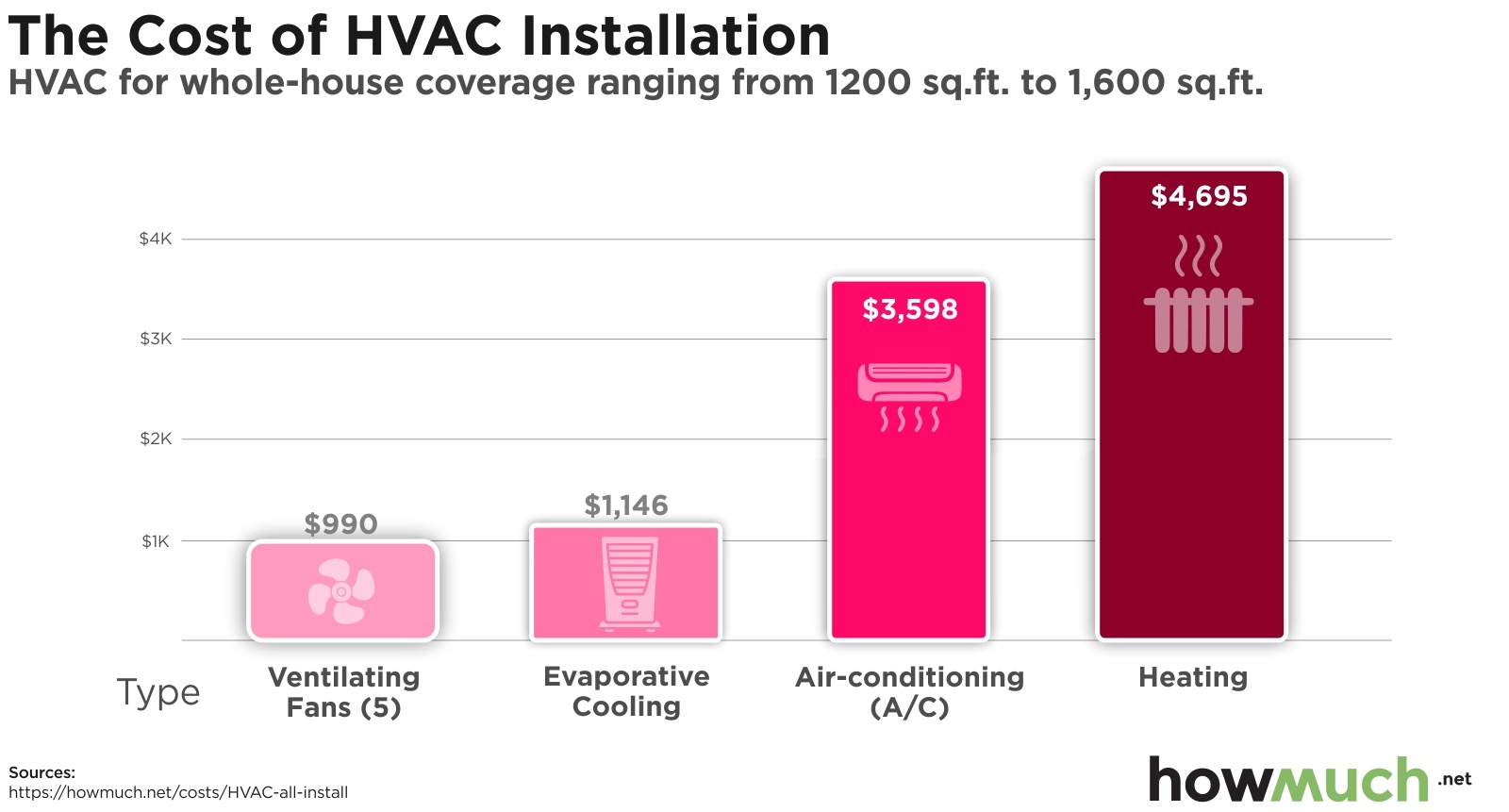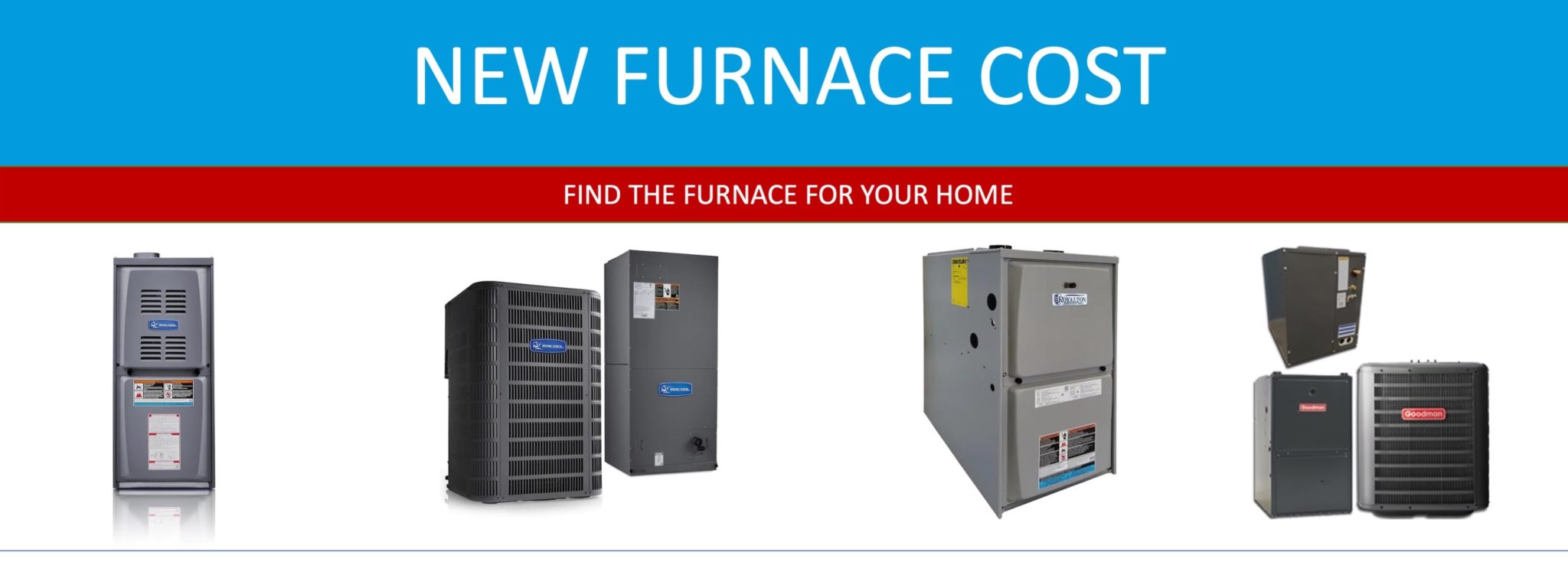How Much Does It Cost To Service Furnace

Furnace service, often referred to as preventative maintenance, is a crucial aspect of home and building upkeep, directly impacting system efficiency, longevity, and safety. Understanding the costs associated with this service is essential for budgeting and making informed decisions. This article breaks down the typical expenses involved, factors that influence pricing, and provides valuable insights for homeowners, HVAC technicians, and facility managers alike.
Average Furnace Service Costs: A General Overview
The national average cost for a standard furnace service ranges from $75 to $300. This range can vary significantly based on several factors, including the type of furnace, the service provider, and the geographic location. A simple tune-up for a residential gas furnace might fall on the lower end, while a more comprehensive inspection of a commercial-grade unit could reach the higher end of the spectrum.
Here’s a breakdown of typical cost ranges for different types of furnace service:
- Basic Furnace Tune-Up: $75 - $150: This usually includes a visual inspection, cleaning of burners, checking filters, and testing basic safety controls.
- Standard Furnace Service: $150 - $250: This encompasses the basic tune-up plus more detailed checks, such as inspecting the heat exchanger, testing gas pressure, and lubricating moving parts.
- Comprehensive Furnace Service: $250 - $300+: Typically offered for older or more complex systems, this may include a combustion analysis, detailed ductwork inspection, and advanced troubleshooting.
Factors Influencing Furnace Service Costs
Several key factors play a role in determining the final cost of your furnace service:
- Type of Furnace: Gas, oil, and electric furnaces each require different service procedures. Gas furnaces generally need more extensive safety checks due to the risk of carbon monoxide leaks. Oil furnaces require specialized cleaning of the burner and flue. Electric furnaces are often simpler to service but might need element testing.
- Service Provider: Larger, well-established HVAC companies might charge more due to overhead costs and brand reputation. Independent contractors or smaller businesses may offer more competitive pricing. Always verify licensing and insurance before hiring any professional.
- Geographic Location: Labor costs vary significantly across the country. Areas with a higher cost of living typically have higher service rates. Additionally, seasonal demand can influence pricing; expect higher prices during peak heating season.
- Furnace Age and Condition: Older furnaces often require more extensive service due to wear and tear. Furnaces in poor condition may necessitate additional repairs beyond the standard service, increasing the overall cost.
- Accessibility: Furnaces located in difficult-to-access areas (e.g., attics, crawl spaces) may incur additional labor charges.
- Emergency vs. Scheduled Service: Emergency service calls, particularly outside of normal business hours, will typically cost significantly more than scheduled maintenance.
What's Included in a Typical Furnace Service?
To understand the value of a furnace service, it's crucial to know what tasks are typically performed. A comprehensive service should include the following:
- Visual Inspection: A thorough check of all visible components for signs of damage, wear, or corrosion.
- Filter Replacement: Replacing the air filter is a critical step in maintaining proper airflow and preventing dust and debris from entering the system. Recommend that homeowners change their filters monthly, especially during peak seasons.
- Burner Cleaning: Cleaning the burners ensures efficient combustion and reduces the risk of carbon monoxide production in gas furnaces. Oil furnaces require specialized cleaning to remove soot and buildup.
- Heat Exchanger Inspection: The heat exchanger is a critical component that transfers heat from the combustion process to the air circulating through the system. Cracks or corrosion in the heat exchanger can lead to dangerous carbon monoxide leaks.
- Flue Inspection: The flue (or vent) carries exhaust gases safely out of the building. Obstructions or damage to the flue can cause carbon monoxide to build up indoors.
- Gas Pressure Testing: Ensuring proper gas pressure is essential for safe and efficient operation of gas furnaces.
- Electrical Component Testing: Checking the wiring, connections, and electrical components to ensure they are in good working order.
- Blower Motor Lubrication: Lubricating the blower motor reduces friction and extends its lifespan.
- Safety Control Testing: Testing safety controls, such as the flame sensor and limit switch, to ensure they are functioning properly and preventing potential hazards.
- Carbon Monoxide Testing: Using a carbon monoxide detector to ensure that the furnace is not producing dangerous levels of this odorless, colorless gas.
DIY vs. Professional Furnace Service: A Careful Consideration
While some homeowners may be tempted to perform basic furnace maintenance themselves, it's important to understand the risks involved. Tasks such as changing the air filter and visually inspecting the unit can be safely performed by homeowners. However, more complex tasks, such as cleaning the burners, inspecting the heat exchanger, and testing gas pressure, should always be left to qualified HVAC professionals.
Attempting to service a furnace without the proper training and equipment can lead to:
- Safety Hazards: Gas leaks, carbon monoxide poisoning, and electrical shocks are all potential risks.
- Equipment Damage: Improper cleaning or adjustment can damage delicate components and shorten the lifespan of the furnace.
- Warranty Voidance: Many furnace manufacturers require professional service to maintain the warranty.
- Inefficient Operation: Improperly maintained furnaces operate less efficiently, leading to higher energy bills.
For facility managers overseeing large buildings, professional service is non-negotiable due to the complexity of commercial HVAC systems and the potential safety risks involved. Regular professional maintenance is essential for ensuring the efficient and safe operation of these systems.
Long-Term Benefits of Regular Furnace Service
Investing in regular furnace service offers several significant long-term benefits:
- Increased Energy Efficiency: A well-maintained furnace operates more efficiently, reducing energy consumption and lowering utility bills. Example: A dirty burner can reduce furnace efficiency by up to 10%, translating to noticeable savings on your heating bill.
- Extended Furnace Lifespan: Regular maintenance helps prevent premature wear and tear, extending the lifespan of the furnace. With proper care, a furnace can last 15-20 years or even longer.
- Improved Air Quality: Clean filters and properly functioning components help improve indoor air quality by reducing dust, allergens, and other pollutants.
- Reduced Repair Costs: Identifying and addressing minor issues early on can prevent them from escalating into major, costly repairs.
- Enhanced Safety: Regular safety checks can detect and prevent potential hazards, such as gas leaks and carbon monoxide poisoning.
Comparing Heating and Cooling Options: The Importance of Maintenance
When comparing heating and cooling options, it's essential to consider not only the initial cost of the equipment but also the ongoing maintenance requirements. While some systems may have a lower upfront cost, they may require more frequent or expensive maintenance. For example, heat pumps generally require less maintenance than gas furnaces, but the cost of a major heat pump repair can be higher. Conversely, oil furnaces, while often affordable to purchase, tend to have higher maintenance needs than gas or electric units.
Consider the Annual Fuel Utilization Efficiency (AFUE) rating of furnaces. Higher AFUE ratings mean greater efficiency and lower operating costs, but regular maintenance is still crucial for maintaining that efficiency over time. A neglected high-efficiency furnace can quickly lose its performance advantage due to dirt and debris buildup.
Tips for Finding a Reputable HVAC Technician
Choosing the right HVAC technician is crucial for ensuring quality service and fair pricing. Here are some tips for finding a reputable professional:
- Get Recommendations: Ask friends, family, or neighbors for recommendations. Online reviews can also be helpful, but be sure to read them critically.
- Verify Licensing and Insurance: Ensure that the technician is properly licensed and insured to protect yourself from liability.
- Check Credentials: Look for technicians who are certified by organizations such as North American Technician Excellence (NATE).
- Get Multiple Quotes: Obtain quotes from several different technicians to compare pricing and services.
- Ask About Experience: Choose a technician with experience servicing your type of furnace.
- Read Reviews and Testimonials: See what other customers are saying about the technician's work.
- Inquire About Guarantees: Ask about warranties or guarantees on the service provided.
In conclusion, understanding the costs associated with furnace service is essential for homeowners, HVAC technicians, and facility managers. By considering the factors that influence pricing, performing regular maintenance, and choosing a reputable technician, you can ensure the efficient, safe, and long-lasting operation of your furnace.
